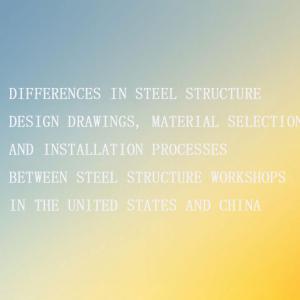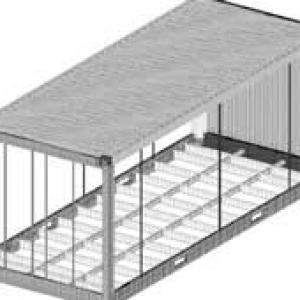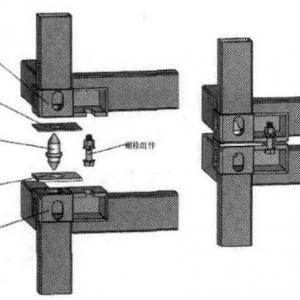Design specifications and certification requirements for steel structures, color steel plates, and insulation materials in various countries around the world
The following are the design specifications and certification requirements for steel structures, color steel plates, and insulation materials in various countries around the world:steel structure
EU: Starting from July 1, 2014, load-bearing steel structures must pass EN1090 certification and be affixed with CE marking. Manufacturers are required to establish a factory production control system, select the execution level EX1-4, verify material certificates, establish welding systems, determine product performance parameters, and sign compliance declarations
United States: The design and construction of steel structures must comply with relevant standards and specifications published by the American Institute of Steel Construction (AISC), such as the "Code for Steel Structures". Steel must comply with standards established by the American Society for Testing and Materials (ASTM), such as ASTM A36
China: Steel structure engineering must comply with relevant national standards and specifications, such as the "Steel Structure Design Standards" and the "Steel Structure Engineering Construction Quality Acceptance Standards". Materials such as steel used for steel structures must have quality certification documents and comply with corresponding national standards, such as "Carbon Structural Steel" and "Low Alloy High Strength Structural Steel" Australia: Must comply with AS 4100 (Steel Structure Design) standards, covering material selection, load requirements, and durability design; It is also necessary to comply with standards such as AS/NZS 2312 (corrosion protection), AS 1170 (structural loads), etc. for corresponding corrosion protection design, load design, etc., and pass a series of durability tests certified by Australian SCA, including material testing, corrosion durability testing, structural performance durability testing, environmental adaptability testing, welding quality and structural integrity testing, etc
Japan: Steel structures must comply with relevant standards and specifications published by the Japan Institute of Architects, such as the "Code for Design of Steel Structures". Steel must comply with Japanese Industrial Standards (JIS), such as JIS G3101
Color steel panel
EU: As a building product, it must comply with the requirements of the CPR building product regulations and be certified according to standards such as EN14782 and EN14783. The certification process includes determining applicable standards and requirements, conducting performance evaluations, preparing technical documents, selecting third-party certification agencies to participate in evaluation and auditing, and finally affixing the CE mark to the final product
United States: It is required to comply with the relevant standards established by the American Society for Testing and Materials (ASTM), such as ASTM A653, which have corresponding requirements for its chemical composition, mechanical properties, coating quality, etc. In building applications, it is also necessary to meet the requirements of the American Building Code (IBC) and other regulations on fire and wind resistance performance
China: It is required to comply with national standards such as "Color Coated Steel Plates and Strips" and have corresponding requirements for the performance of its substrates and coatings. When used in construction projects, it is also necessary to meet the requirements of relevant regulations such as building fire prevention for its combustion performance
Saudi Arabia: Exporting to Saudi Arabia requires SABER certification, which includes the importer registering a SABER system account, submitting product information for review, obtaining a PC certificate, and then applying for an SCOC certificate. The product must comply with Saudi Arabia's relevant quality and safety standards Australia: Exporting to Australia must meet the requirements of standards such as AS/NZS 4859.1. After the product has been tested and passed strict factory evaluation, a Standard Mark certification certificate can be issued
Thermal insulation material
EU: Starting from March 1, 2006, insulation materials sold in the EU market, such as glass wool, rock wool, etc., must undergo CE certification and be affixed with the CE mark. Certification is based on the EN13172 standard and related product standards, such as EN13162, EN13163, etc., to test and evaluate the fire resistance, thermal resistance, thermal conductivity, dimensional stability, tensile strength, and other properties of insulation materials
USA: Must comply with standards established by the American Society for Testing and Materials (ASTM), such as ASTM C578. For different types of insulation materials, there are different performance requirements and testing methods, and there are corresponding norms and standards that constrain their use in building energy efficiency and other aspects
China: It shall comply with the corresponding national standards, such as Rock Wool Thermal Insulation Products for Building, Molded Polystyrene Foam Plastic for Thermal Insulation, etc. There are clear requirements for thermal conductivity, apparent density, compressive strength, combustion performance and other indicators of thermal insulation materials, and some thermal insulation materials also need to be filed with energy-saving performance labels
Australia: Glass wool, rock wool and other insulation materials exported to Australia must meet the standard requirements of AS/NZS 4859.1, mainly focusing on material thermal resistance, fire resistance, weight, density, size and other aspects of testing. After the product passes the test and undergoes strict factory evaluation, a Standard Mark certification certificate can be issued
Japan: It is required to comply with relevant standards such as Japanese Industrial Standards (JIS), such as JIS A9511, which have specific requirements for the performance indicators of insulation materials. There are also corresponding specifications and guidelines for their application in building energy conservation





